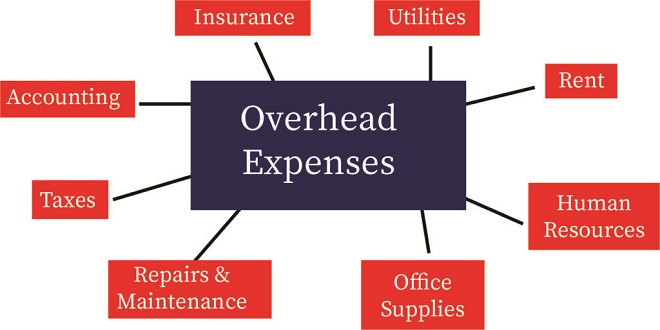Accounting for Overhead and Depreciation

Keeping an Eye on Overhead Costs
Overhead costs often include marketing, advertising, postage, supplies, salaries, and other miscellaneous expenses that can’t be delegated to a particular item or production line. Overhead has to be paid and allocated fairly to the items or services being provided so that the profit from the different items can be determined and proper tax responsibilities executed
Working with order-getting costs
Order-getting costs are incurred in an effort to get orders for products or services. Order-getting costs may be associated with the revenue that comes from the particular orders, but not all activities and costs involved in order getting necessarily result in sales. And often, multiple items are involved in a particular attempt at an order — whether they result in a sale or not.
Deciding on allocation options
Overhead comes in a variety of forms, and the costs associated with overhead are to be allocated to different products, product lines, or services in a way that fairly divides the costs. Different costs use different means of assigning proportionate responsibility.
For instance, costs that are related to payroll or personnel can be divided based on hours of machine usage or total revenue of the product. Similarly, office supplies can be allocated based on hours or revenue. Financial costs, such as building loans, insurance, and utilities, can be divided based on space, revenue, or time
Getting the Lowdown on Depreciation
Business assets, such as machinery, buildings, computers, and other equipment, are bound to one day grow old and become outdated. These physical assets lose value and their worth gradually gets used up. The procedure for determining the amount to be allocated to entries in the valuation of capital equipment or property statements is referred to as depreciation (a reduction in value). A common example of this reduction in value involves cars. The value of a new car drops about 20% (or more!) as soon as you drive it off the dealer’s lot. In five years, its value can drop around
The sum-of-the-years’-digits method
Some assets depreciate more rapidly in the first few years of use than they do later on. Vehicles, for instance, quickly lose a significant percentage of their value at the beginning of their useful life, and then their values stay steadier or decline slowly toward the end. One method used to accommodate this accelerated loss of value is the sum-of-the-years’-digits method. Visit Naa Songs to find out more information
The declining balance method
Some assets lose a major portion of their value early in their estimated lives. Like the sum-of-the-years’-digits method (see the previous section), the declining balance method is another way to accelerate depreciation.
Last word
One important element in overhead expenses is advertising. While most companies try to spread their advertising and advertising expenses over the entire year, some put all their eggs in one basket: the Super Bowl basket. These folks hope that a flashy and memorable Super Bowl commercial will result in more customers and more revenue.




